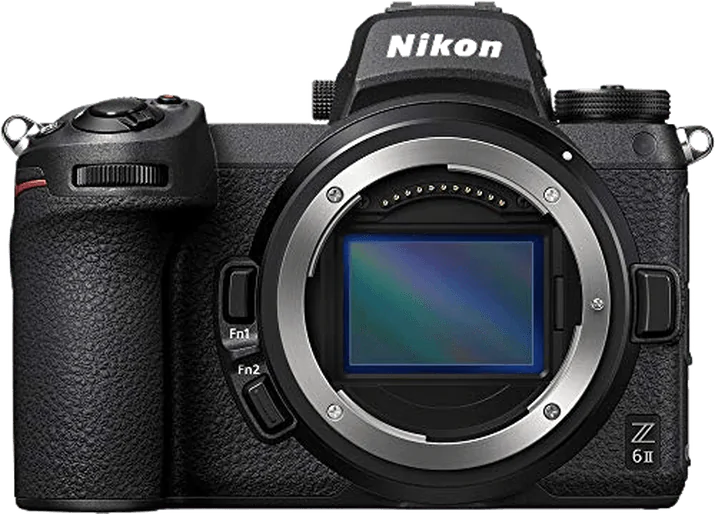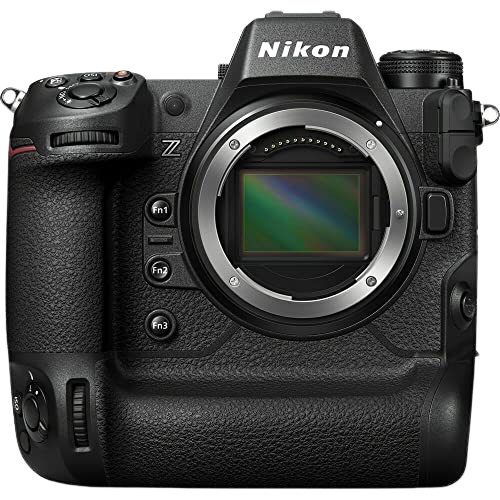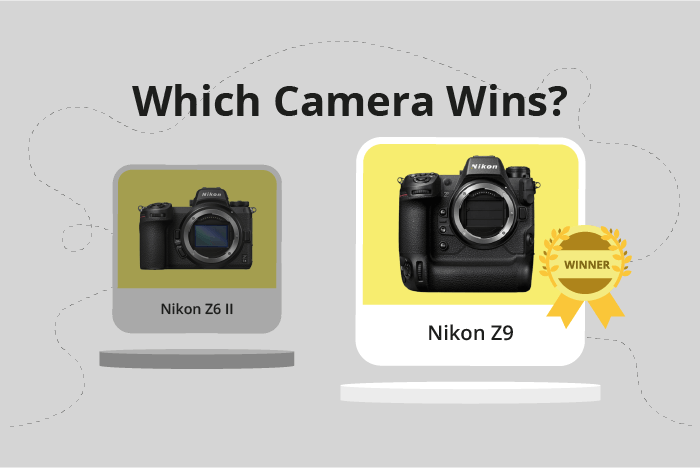Nikon Z6 II vs Z9 Comparison
Nikon Z6 II

Nikon Z9

The Nikon Z9 emerges as the winner with a score of 87/100, while the Nikon Z6 II scores 83/100. Both cameras are mirrorless and were announced in 2020 and 2021, respectively. They share similarities in their camera types and manufacturers.
The Nikon Z9 outperforms the Z6 II with its higher score, reflecting its superior features and performance. However, the Z6 II has its advantages, such as a lighter weight of 705g (1.55lbs) and smaller size (134 x 101 x 70mm), making it more portable and convenient. Additionally, the Z6 II has a lower launch price of $1995, compared to the Z9’s $5500.
While the Nikon Z9 is a better camera due to its higher score, the Z6 II still offers value with its portability and affordability. Ultimately, the choice between the two depends on the photographer’s preferences and budget.
Nikon Z6 II vs Z9 Overview and Optics
The Nikon Z9 takes the lead in optics with a score of 88/100, while the Nikon Z6 II follows closely with a score of 83/100. Both cameras share some common specifications, including a CMOS sensor, a full-frame sensor size, a Nikon Z lens mount, and image stabilization.
The Nikon Z9 outperforms the Z6 II in several aspects. It boasts a higher megapixel count at 46 compared to the Z6 II’s 24.5, providing more detailed and sharper images. The Z9 also features a faster shooting speed of 30 frames per second (fps), doubling the Z6 II’s 14 fps, allowing for better action and sports photography. Additionally, the Z9 has a superior processor, the Expeed 7, which contributes to its faster shooting speed and overall improved performance. The Z9’s sensor also holds a higher DXOMARK score of 98, compared to the Z6 II’s 94, indicating better image quality and dynamic range.
On the other hand, the Nikon Z6 II still holds its ground with a dual Expeed 6 processor, providing reliable performance for various photography scenarios. Its 24.5-megapixel sensor, while not as high as the Z9’s, delivers excellent image quality, making it suitable for most photographers’ needs.
In comparing these two cameras, the Nikon Z9 stands out as the superior choice in terms of optics, with its higher megapixel count, faster shooting speed, and better sensor performance. However, the Nikon Z6 II remains a solid option for those who do not require the advanced features of the Z9, as it still provides quality performance with its dual Expeed 6 processor and 24.5-megapixel sensor.
Nikon Z6 II vs Z9 Video Performance
The Nikon Z9 emerges as the winner in the video capabilities category, scoring a perfect 100 out of 100, while the Nikon Z6 II trails behind with a score of 91. Both cameras share some common video features, such as a maximum frame rate of 120fps and built-in time-lapse functionality. However, the Z9 clearly outperforms the Z6 II in terms of video quality and resolution.
The Nikon Z9 boasts a maximum video resolution of 8K, with dimensions of 7680 x 4320 pixels. This high resolution enables the Z9 to capture extremely detailed and sharp footage, which is particularly beneficial for professional videographers and filmmakers. On the other hand, the Nikon Z6 II offers a maximum video resolution of 4K, with dimensions of 3840 x 2160 pixels. While this resolution is still suitable for most purposes, it falls short of the exceptional quality provided by the Z9.
Despite the lower video score, the Nikon Z6 II still excels in certain aspects. Its 4K resolution is adequate for many users, particularly those who do not require the highest possible video quality or have limited storage capacity. In addition, the Z6 II is more affordable than the Z9, making it a more attractive option for budget-conscious consumers.
Comparing the video capabilities of the Nikon Z6 II and the Nikon Z9, it is evident that the Z9 is the superior choice for those seeking top-notch video quality and resolution. However, the Z6 II remains a viable option for users who prioritize affordability and are satisfied with 4K video resolution. Ultimately, the decision between these two cameras depends on individual needs and preferences.
Nikon Z6 II vs Z9 Features and Benefits
The Nikon Z6 II and Nikon Z9 both offer impressive features, with each camera scoring 87/100 in this category. Despite having the same score, each camera has its own advantages and disadvantages.
Both cameras share several features, including a 3.2-inch touchscreen, WIFI, and Bluetooth capabilities. The screen resolution is nearly identical, with the Nikon Z6 II having 2,100,000 dots and the Nikon Z9 having 2,088,960 dots. These similarities make both cameras suitable for various photography and videography needs.
The Nikon Z9 has additional features that give it a slight edge over the Nikon Z6 II. The most notable advantage is the flip screen, which allows for more versatile shooting angles and better ease of use when capturing images from difficult positions. The Z9 also includes GPS functionality, making it an ideal choice for photographers who need to track their locations for geotagging or other purposes.
On the other hand, the Nikon Z6 II does not have any significant advantages over the Nikon Z9 in terms of features. The slightly higher screen resolution does not provide a noticeable difference in display quality. Both cameras have the same feature score, but the Z9 outperforms the Z6 II with its added capabilities.
Considering the features of both cameras, the Nikon Z9 is the better option for photographers who require a flip screen and GPS functionality. The Nikon Z6 II is still a strong contender for those who do not need these additional features, and its marginally higher screen resolution may appeal to some users. Ultimately, the choice between these two cameras will depend on individual preferences and specific photography needs.
Nikon Z6 II vs Z9 Storage and Battery
The Nikon Z9 outperforms the Nikon Z6 II in storage and battery with a score of 79/100 compared to the Z6 II’s 71/100. Both cameras have two memory card slots and support USB charging. They accept SD, CFexpress, and XQD cards, with the Z9 being UHS-II compatible for SD cards, while the Z6 II is UHS-II compatible for both SD and CFexpress Type B cards.
The Z9’s superior battery life of 740 shots, using the EN-EL18d battery, gives it an advantage over the Z6 II’s 410 shots with the EN-EL15c battery. This longer battery life allows for extended shooting sessions without needing to replace or recharge the battery.
The Z6 II, however, has no significant advantage over the Z9 in terms of storage and battery. Both cameras share similar storage capabilities and USB charging options.
To sum up, the Nikon Z9 offers a better battery life than the Z6 II, making it a more suitable choice for photographers who require extended shooting sessions. The storage capabilities of both cameras are quite similar, but the Z9’s UHS-II compatibility for SD cards gives it a slight edge.
Alternatives to the Nikon Z6 II and Z9
Are you still undecided about which camera is right for you? Have a look at these popular comparisons that feature the Nikon Z6 II or the Nikon Z9:

